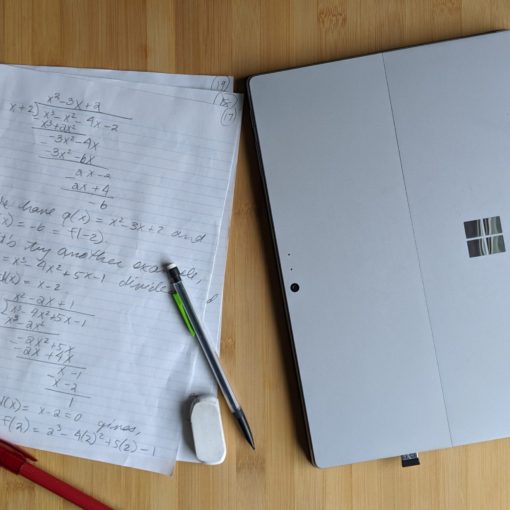Before we offer some tops on learning with others while social distancing, there are a few terms we want to understand clearly. Some of the terms that are being used a lot lately are, social distancing, self-quarantine, and social isolation. When asked to practice social distancing it seems there are certain actions or ways of altering our lifestyle that are encouraged. For example, [1-4]
What does social distancing consist of?
- Avoiding crowded places
- Avoiding gatherings that aren’t absolutely necessary
- Minimizing contact with high risk persons e.g. older people, those in poor health
- Maintaining a distance of at least 3 feet or 1 metre from others whenever possible.
Some of the ways of achieving this is
- Working from home
- Visiting friends and family electronically
- Cancelling or postponing conferences and large meetings
- Closing schools and/or switching to online learning/education
- Holding virtual meetings
- Spending time outside when meeting with people.
- Use food delivery services
- Exercises outside or at home
What does self quarantine mean?
Self quarantine seems to be recommended for people who have been knowingly exposed to the coronavirus and may be at risk at coming down with COVID-19. The recommendation is that this lasts 14 days. The idea is this should be enough time to determine if you will become ill and contagious. Other situation when self quarantine may be advised is to those that have returned from traveling abroad. What does self quarantine involve? Good question. [2]
- Washing hands frequently or just using standard hygiene.
- Not sharing utensils, towels etc
- Staying at home
- Not having visitors
- Staying at least 6 feet away from others in your household.
Finally,
What is self isolation?
It seems self isolation is what you do to prevent the spread of the virus. It seems this is an instruction that has been given specifically to you. This is when you have been confirmed to have COVID-19. The idea here is those that are infected are kept away from those who are not infected. This can take place at home, in a hospital or some kind of care facility. [5]
During this period of social distancing, self-quarantine and self isolation, life still goes on. And for students this means learning continues, fortunately or unfortunately. How the learning continues will change. While large social groups and in person meeting are being discouraged unless absolutely necessary, schools and large classes in educational institutions are suspended. In this digital age and with the internet there are many resources and means to stay connected and keep learning online.
Some schools and school boards will be providing online courses to supplement missed in person classes. Some teachers may be providing homework problems, exercises and notes for students to go through on there own. This is great for developing self studying skills. TVO is offering online learning tools for Ontario school students, including math tutoring. These resources are great but sometimes more or different resources, presentation of the material is required. This is where using other online resources such as YouTube videos, online exercises sheets and online tutors can be helpful. If you normally work together with friends on homework, finding online platforms to talk, write and share ideas is important. Below we’ll look at a few online tools for staying connecting and learning with others while social distancing.
Online whiteboards
What is an online whiteboard?
So most of you probably know what a whiteboard is. It’s like a blackboard except that it’s white and you write on it with special pens whose ink can be wiped off with a whiteboard eraser. An online whiteboard is very similar. It’s a webpage that can be shared among at least two people and everyone sharing the webpage can “write” on it.
How do online whiteboards work?
There are many different platforms the provide online whiteboards and workspaces for multiple persons. But the jist of how they work is as follows:
- One person, let’s call them the organizer or facilitator of the board, created the board.
- A link to this board is provided which the organizer/facilitator then shares with whomever they wish to have access to the board.
- Now, facilitator and invited participants have access to the board, and everyone can write and share ideas on the board.
- At the end of the meeting or session, the contents on the board can be saved to be viewed at a later date.
- Facilitator and participants then leave the board.
Now, you’re probably wondering, how do you actually talk or communicate with everyone who has access to the board? Good question. Depending on the platform there may be built in messaging and/or video chat. This is not as common. However, to simulate this other tools can be used, such as Skype, Zoom, Facebook Messenger, Google Hangouts. And if none of those options are possible, a phone is always available.
What can be done on these online whiteboards? Just like any white board, everyone can write and share ideas. With an online white board, on many platforms, the power of being able to upload files and download the content that was created on the board is available with an online whiteboard. Some platforms provide templates and now the “whiteboard” is more of an online workspace.
How to do online math tutoring?
This is a good question and one we have been asking ourselves and more so recently. There are several companies, businesses and platforms providing “online” tutoring, but exactly HOW does it work? And how effective is it? Well, a more thorough research into this question over the past week has shed more light on to this question. Details of what is out there is definitely another blog post. However, a quick overview of what was found and can help facilitate learning with others while social distancing can be found below:
Online tutoring can mean,
- Online homework help: student uploads the exercises that they need help with and then the “tutor” solves and gives a step by step, detailed set of solutions to learn from.
- On demand online help: where a picture of the exercises that the student is having trouble with is uploaded in real time to the tutor and the tutor provides step by step guidance through conversation, or pictures that are returned to the student via the platform
- Online tutoring: Here the tutor and student meet on the platform provided by the online tutoring company and work is done on an online white board within the business platform.
- Online videos: These can be videos specifically geared toward certain topics in mathematics are various levels. Most seem to be geared to younger students.
In most, if not all the cases above, you are restricted to the tutors that are provided by the particular company. Now that the service is online it is very possible these tutors can be from anywhere in the world, speak multiple languages and can tutor at any time of the day. The options for learning with others while social distancing have increased.
In a follow up post, we will look at a few online whiteboard options and face time and voice chat solutions that we have come up with and that you can use with your friends and family during this time of social distancing.
References:
- What is social distancing?, Ottawa Public Health, URL: https://www.ottawapublichealth.ca/en/public-health-topics/social-distancing.aspx
- Coronavirus, Social Distancing and Self Quarantine, Reviewed by: Lisa Lockerd Maragakis, Johns Hopkins Medicine, URL: https://www.hopkinsmedicine.org/health/conditions-and-diseases/coronavirus/coronavirus-social-distancing-and-self-quarantine
- Social Distancing, Wikipedia, URL: https://en.wikipedia.org/wiki/Social_distancing
- Social Distancing (infographic), Government of Canada, canada.ca, URL: https://www.canada.ca/en/public-health/services/publications/diseases-conditions/social-distancing.html
- Self-Isolation Instructions for Novel Coronavirus (COVID-19), Ottawa Public Health, URL: https://www.ottawapublichealth.ca/en/public-health-topics/self-isolation-instructions-for-novel-coronavirus-covid-19.aspx




